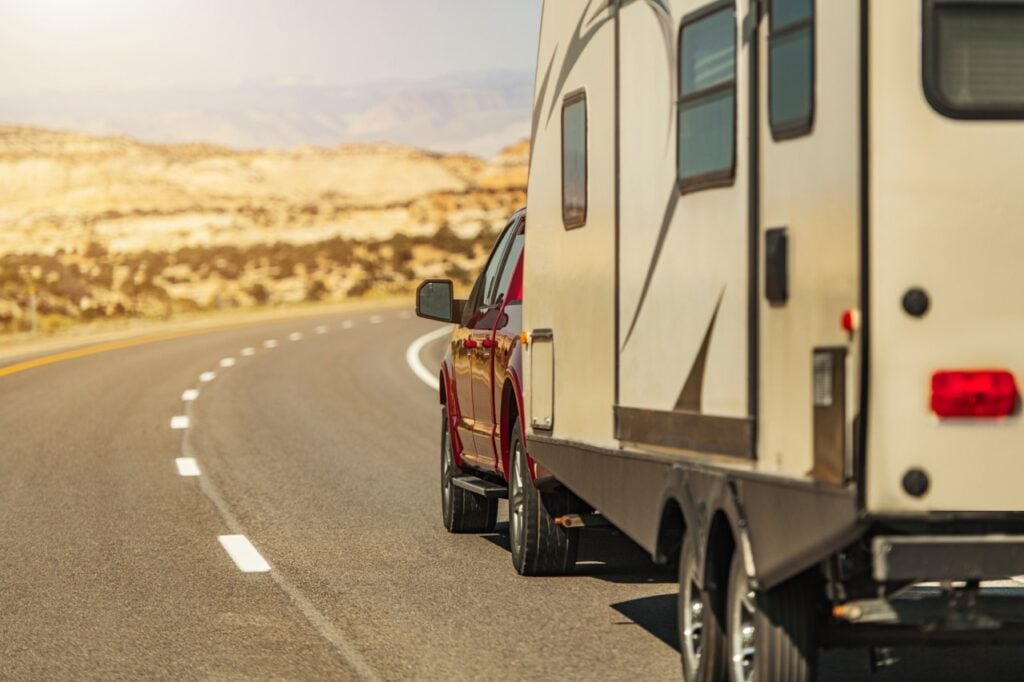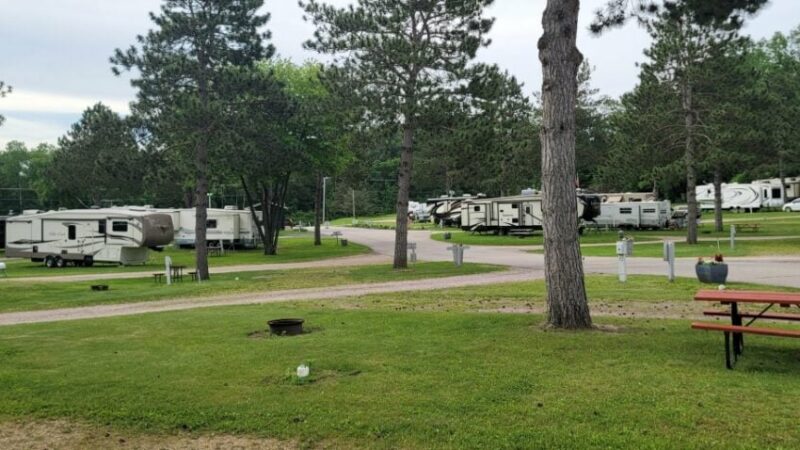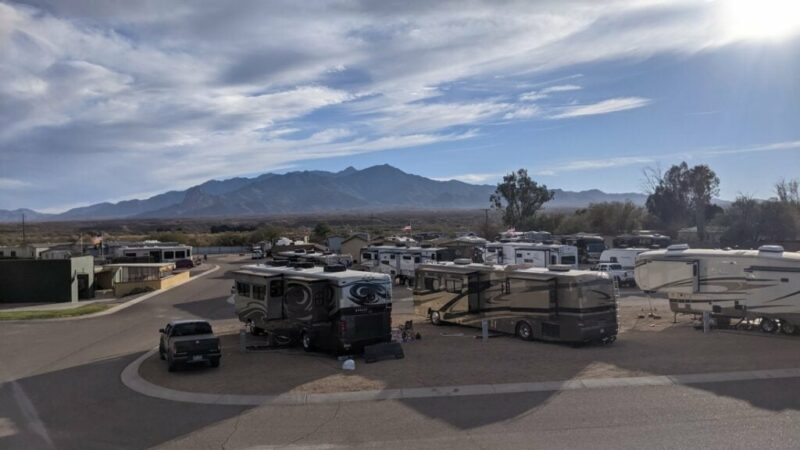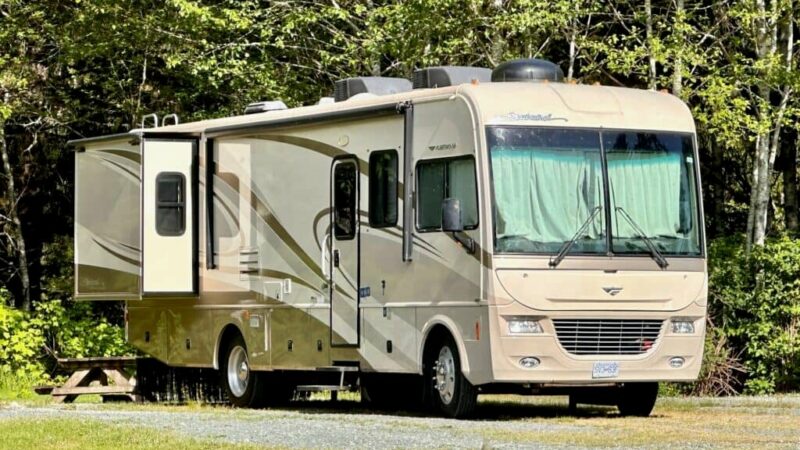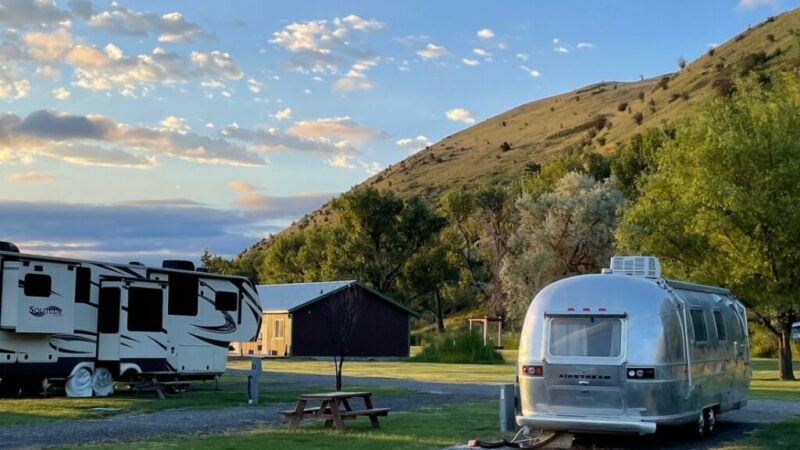9 Things to Consider on an RV Test Drive
An RV test drive is much more than a trip around the block.
When you think about test driving an RV you’re probably thinking of test driving a motorhome. But an RV test drive should not be limited to motorized RVs. Equally important is the need to test tow a travel trailer or fifth-wheel, or test haul a or truck camper. When you arrive home with your new RV is not the time to discover that the truck with which you intend to tow is incompatible.
1) Is your tow vehicle set up correctly?
It’s important to know in advance if your vehicle is set up correctly for your new RV. This includes everything from the truck’s hauling capacity to its towing capacity. You need to know if the electrical connection for the trailer’s braking and electrical system is compatible with your towing vehicle. Also, whether you’re going to need anti-sway stabilizers for the trailer. Or even if will you need to replace the tow-vehicle suspension or tires with more heavy-duty options.
2) Look for defects in towing hardware
An RV test drive will reveal if your tow vehicle is set up correctly. It will also forewarn you of any defects in the coupling hardware mounted on the trailer or camper. We repeatedly see people in RV parks, struggling to unhitch the truck from the trailer. An RV test drive will quickly expose any defects in the hardware if you have trouble hooking up unhooking the trailer. If you’re buying a used RV from a private party, it is also an excellent time to have the current owner demonstrate any unique aspects of the whole process.
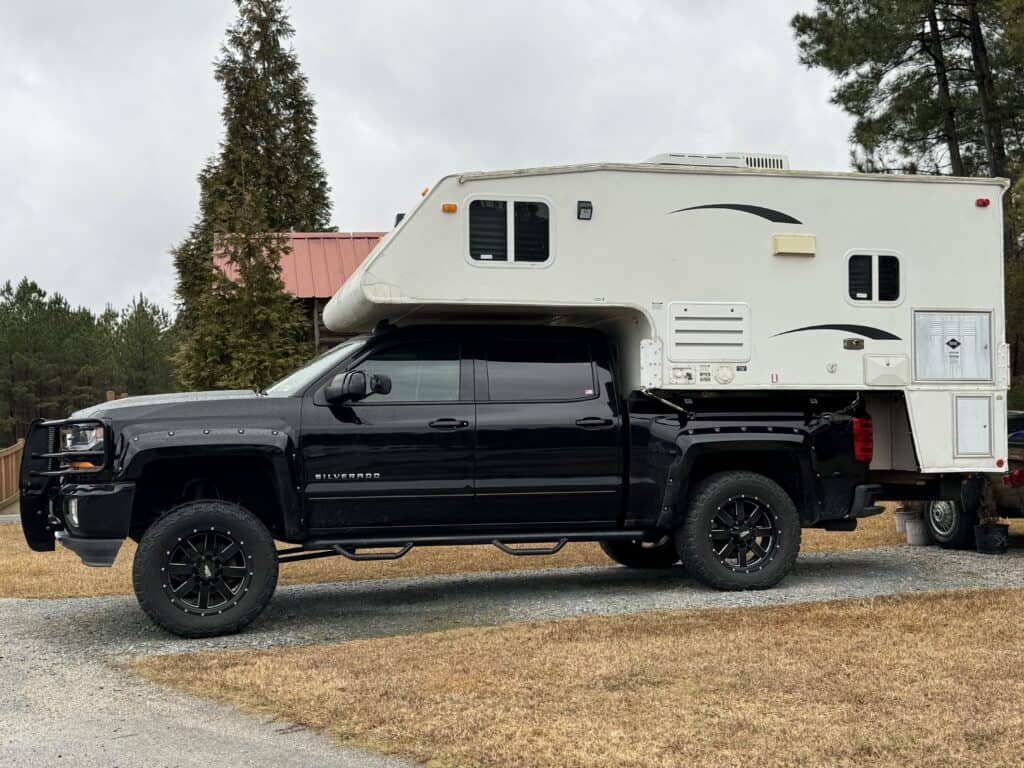
3 Test hauling and towing are part of an RV test drive
An RV test drive will allow you to evaluate the compatibility of your intended purchase with your existing vehicle. Additionally, if you’re purchasing a truck camper, it would also be prudent prior to purchase to have it mounted on your truck. That way, you can ensure the fit is right, and that the descending jack legs (if equipped) don’t rub on the outside surface of the truck. Once the camper is mounted on your truck, you should still take it on an RV test drive. The RV test drive will reveal whether your truck and camper are well balanced. It will also reveal if the truck has the appropriate suspension and engine capacity to manage the extra weight.
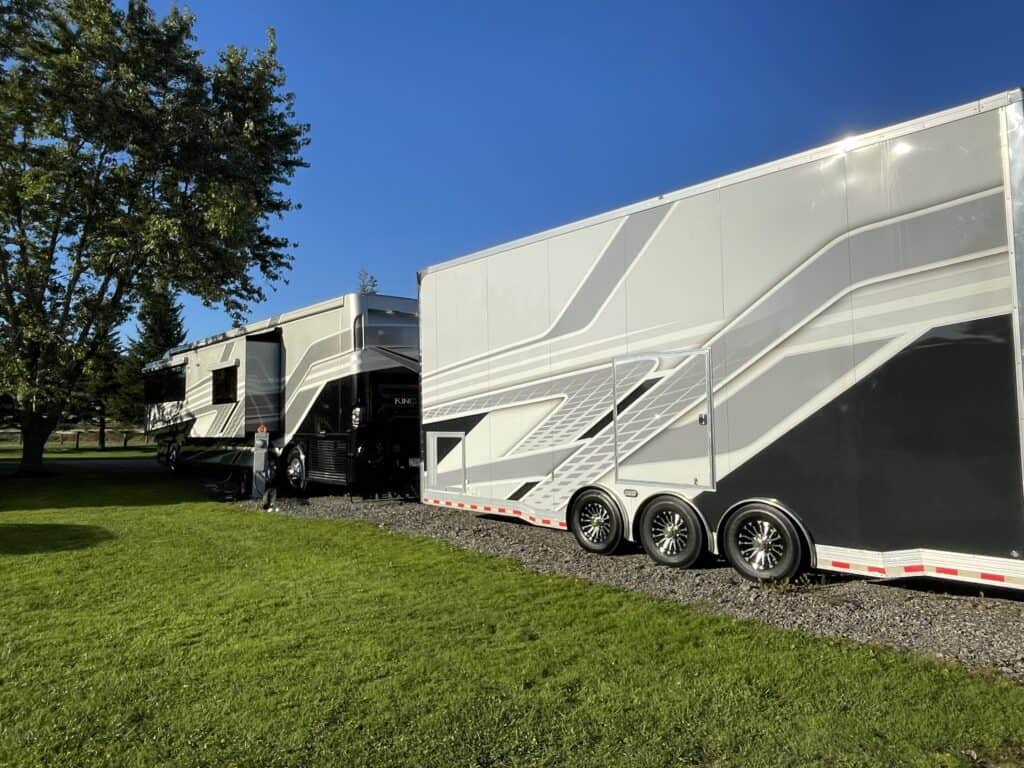
4 Towing a dinghy behind a motorhome
In the case of a motorhome: If you’re going to tow a dinghy vehicle, hook up the tow vehicle as you would after the purchase is complete. That way, you can test drive the whole unit. This will give you a better idea of the overall towing experience that should be evaluated during your test drive.
5 Allow plenty of time
Whether you’re testing a motorhome, trailer, or a truck camper, allow plenty of time for a lengthy test drive. The RV test drive should not be a short, around-the-block low-speed endeavor. If possible, take the vehicle to a large empty parking lot where you can assess the handling characteristics. Safely test the RV’s acceleration and stopping distance at different speeds in the parking lot. We’ll talk about highway speeds later.
6 Use all your senses during an RV test drive
Be hyper-aware when conducting an RV test drive. Ask your spouse or friend to watch the vehicle from the outside. Listen to the sounds of the engine and the brakes. Also listen for any detectable sounds coming from the steering column, drive line, or hitching hardware. In a motorhome, listen for unusual sounds coming from the living areas of the RV which might indicate a defective installation of some components. Specifically, things like the water heater, microwave, or shower doors.
After driving the RV for a while, stop, get out and look all around the RV for any visual evidence of defects. While you’re conducting this visual assessment also be aware of any possible odors emanating from the tires or engine. Use your sense of touch to determine if any components seem to be overheating. Feel the tires, engine area, and the hitch. Once you’ve done all the above, it’s time to get out on the open road to test acceleration and stability.
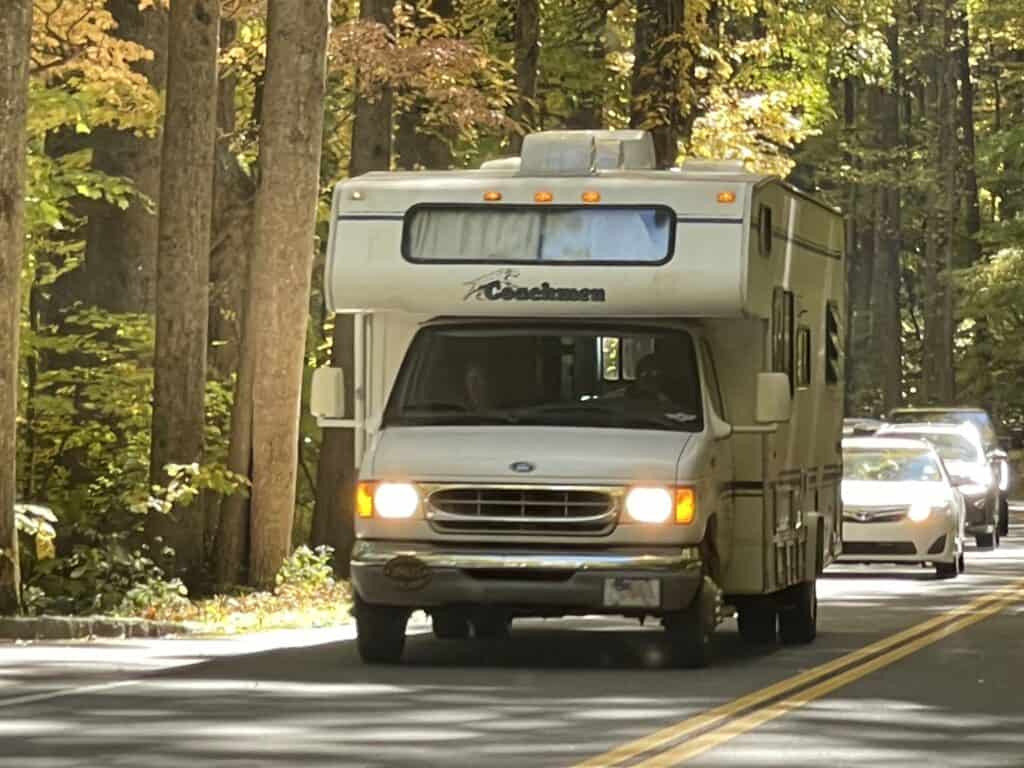
7 Test drive at highway speeds
Driving the RV at highway speeds will expose any vibrations or shuttering that may occur as the RV (or tow vehicle) transmission shifts from one gear to the next. Be aware of how long it takes to accelerate to highway speeds. Is this greater than your expectation? Does the motorhome or tow vehicle seem to be straining to achieve highway speeds? If you’re towing a dinghy or trailer does it feel like the tow vehicle is able to manage the extra weight? Does the towed vehicle look like it’s following in a straight line behind the towing vehicle or is it drifting back and forth in the lane?
8 Does the driver’s area fit your frame?
If the test drive is in a motorhome, another important thing you should pay close attention to is how well you fit in the driver’s seat. Is it the right height and shape? Do you have enough legroom? Does the driver’s seat have enough adjustments to maximize comfort? Do you have good vision out the front window and clear vision of all the mirrors? Does the driver’s seat seem to be appropriately aligned with the steering column and foot pedals? Can you easily reach all the controls?
9 Use test-drive time for a full inspection
While you’re doing the RV test drive, pull over in a safe area and check the functionality of all the components in the RV. This includes things like the water heater, microwave, flush mechanism of the toilets, doors and windows, the gas range, refrigerator, entertainment center, and even the Sleep Number bed (if equipped). Ask the salesperson or previous owner about the operation of all the components. You may never get another chance to fully inspect before purchase. Remember, if you end up buying this RV, you’re going to have it for many years. For most people the purchase of an RV represents a large personal investment. Therefore, you have the right to assess every detail, component, and feature of the RV. If one test drive is not enough, schedule a second one.
An RV test drive may prevent a regrettable purchase.
The point of an RV test drive and inspection is that you want to be sure you’re purchasing a motorhome, trailer, or truck camper that fits your needs. It should be in good working order, reliable, and will provide years of enjoyable camping experiences. Forgoing this step could result in a purchase you regret.
The post 9 Things to Consider on an RV Test Drive appeared first on RV LIFE.
Source: https://rvlife.com/9-things-to-consider-on-an-rv-test-drive/
